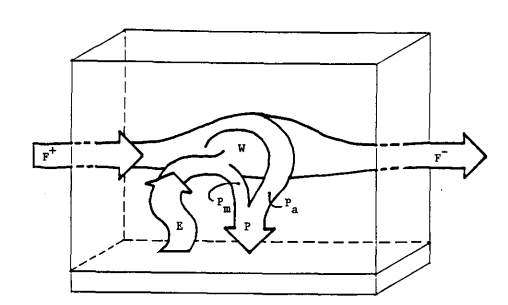Roshanak Tootoonchi, Ph.D. student 36th cycle, University of Trento, DICAM
The Earth's hydrological cycle is being strongly affected by warming induced by increases in greenhouse gas concentrations due to anthropogenic activities, with significant and potentially detrimental societal and economical impacts. One robust response to warming that is well understood is that, in the absence of any change in the atmospheric circulation, regions that are wet will become wetter and regions that are dry will become drier. This is referred to as the thermodynamics response, as it is a consequence of a fundamental thermodynamic law linking the amount of atmospheric water vapor to temperature. However, changes in atmospheric circulations play a fundamental role in precipitation changes at the regional scale, and these dynamic changes remain highly uncertain and not well understood.
The Mediterranean region is a dry region, with more water evaporating from the surface than it precipitates back to it as rain in the annual mean. Hence, this region is expected to become even drier as our climate continues to warm in the next few decades. These expectations are confirmed by projections with state-of-the-art climate models, which identify the Mediterranean region as a hot spot, with a strong drying and warming signal. The degree of projected drying is however affected by circulation changes, which models agree less well upon, and that is demonstrative of the limited understanding of underlying mechanisms.
In this project, we are exploring how atmospheric circulations, such as winter-time storms, whose path is influenced by the position of prevailing upper-level winds, or summer-time anti-cyclonic conditions that suppress convection and precipitation, influence the hydrological cycle in the Mediterranean, both in terms of its annual mean and its seasonal evolution. The atmospheric moisture budget provides the natural framework to explore these links, as it relates precipitation to both moisture evaporated locally from the surface and moisture of remote origin being converged into the column by the atmospheric circulation. Figure 1 shows a simplified schematic of the atmospheric moisture fluxes over land (Brubaker et al., 1993). P and E indicate precipitation and evaporation, respectively. The horizontal arrows (F+ and F-) indicate advective flux of vapour into and out of an atmospheric column; and W is the amount of precipitable water.
Figure 1:

Our starting point is exploring how the atmospheric moisture budget in the region is maintained in present-day climate using reanalysis data, which are spatially complete and temporally consistent observational data, interpolated by an underlying weather forecasting model. In particular, we aim to assess the contribution provided by highly variable storms (referred to in the literature as transient eddies) and by more slowly or quasi-stationary circulations features (referred to as stationary eddies).
Hypotheses emerging from this analysis will then guide the assessment of projections by climate models. It is expected that the enhanced understanding provided by this approach will shed light on the fundamental mechanisms responsible for the Mediterranean drying and will eventually help reduce uncertainties in climate model projections in the region.
